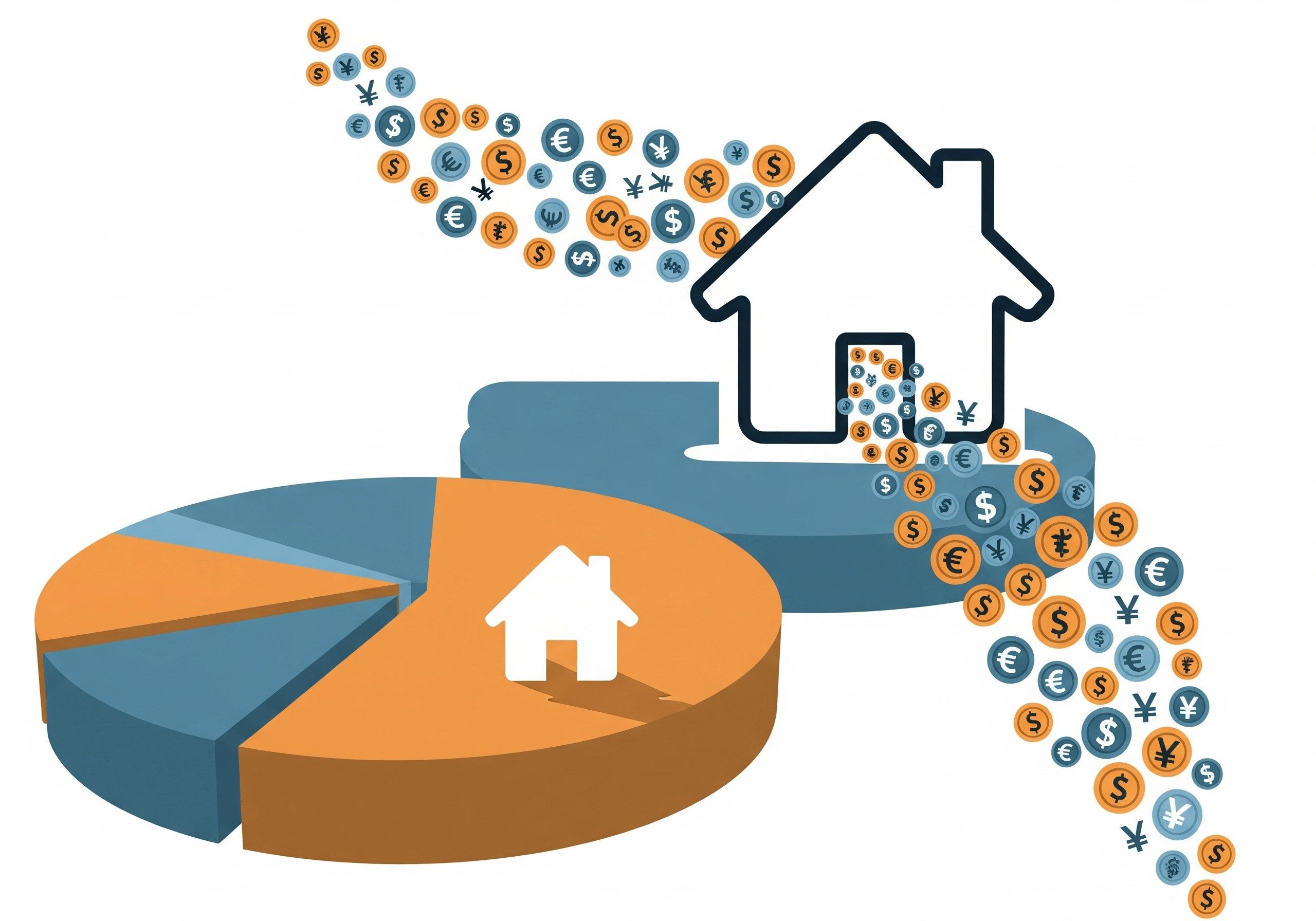Author: Vince Adriatico (Ex-banker with 750+ Credit Score)
Date: 7/1/2025
Housing costs are climbing fast, and the old rule that you should spend no more than 30% of your income on rent or a mortgage is getting harder to follow. In today's market, the percentage of income for housing is creeping well above that line for millions of Americans. Whether you're renting, trying to buy your first home, or just looking to stay afloat, knowing your housing-to-income ratio is more important than ever. This article explains what the 30% rule means in 2025, why so many exceed it, and what steps you can take. From reassessing your budget to building credit with tools like Cheers, to making housing more affordable and your finances more stable.
What Is the Percentage of Income for Housing Supposed to Be?
The 30% rule has been a long-standing financial guideline. It's simple: your total housing costs-rent or mortgage, taxes, and insurance-shouldn't exceed 30% of your gross monthly income. This benchmark stems from HUD (U.S. Department of Housing and Urban Development) guidelines and was once considered a line between affordable and burdensome housing.
For example:
- If you earn $4,000/month, your housing costs should stay under $1,200.
- At $6,000/month, that figure rises to $1,800.
It's also part of the 28/36 rule, which suggests spending no more than 28% on housing and keeping total debt under 36% of your income. However, very few people are meeting these targets in today's market.
How the Numbers Are Shifting in 2025
Recent data shows that many Americans spend more than 30% of their income just to keep a roof over their heads. Reports show that Americans spend around 25.8% of their income on housing on average. But averages don't tell the full story-many renters and first-time homebuyers are seeing much higher ratios.
Realtor.com reports that the average household now needs to spend 44.6% of its income to afford a median-priced home. In high-cost states like California, it can be even higher.
Meanwhile, Moody's Analytics found that the typical renter is now spending roughly 30% of their income on rent, up from about 25% in 2020. That's a significant shift in five years, pricing people out of stability.
Why Your Ratio Matters More Than Ever
Once your housing costs go beyond 30% of your income, everything else becomes more complicated to manage:
- Emergency savings start to shrink.
- Credit card debt becomes a fallback for basic expenses.
- Long-term goals like retirement or homeownership get pushed back.
The National Low Income Housing Coalition classifies people spending over 30% on housing as "cost-burdened." If you're above 50%, you're "severely cost-burdened." That's not just a category - it's a warning sign that one emergency could trigger a financial collapse.

What About First-Time Homebuyers?
Trying to break into the housing market today takes more than saving up. Harvard's Joint Center for Housing Studies reports that first-time buyers now need to earn about $126,700 per year to afford the average home and its monthly mortgage payments- around $2,570/month.
That income requirement puts homeownership out of reach for many. It's also driving a rise in what some call "nepo-buying"- when younger buyers rely on family assistance, gifts, or cosigners to qualify. The median age of first-time buyers has jumped to 38, and more than one-third of buyers under 30 get help from their parents.
How to Improve Your Housing-to-Income Ratio
Start by calculating your actual ratio. Divide your total monthly housing costs by your gross monthly income. If the result is higher than 0.30, you're considered cost-burdened. That doesn't mean you're doing something wrong-it means it's time to take a closer look at your options.
In many cases, adjusting where you live is the fastest way to bring that ratio down. Moving to a lower-cost neighborhood or city can save hundreds of dollars monthly. Shifting just a few miles can create meaningful savings even within the same metro area.
If moving isn't feasible, consider negotiating your lease before it renews. Long-term tenants who pay on time may have leverage to reduce or cap their rent increases. Some cities also offer rent-controlled units or inclusionary housing programs that cap rent based on income.
Beyond housing costs alone, reducing your total debt load can also help your overall financial picture. Keeping your total debt-to-income ratio under 36% makes you more attractive to lenders and gives you more monthly flexibility. That might mean tackling credit card balances first or refinancing auto loans to lower monthly payments.
Improving your credit is another effective move. A stronger credit score can help you qualify for lower-interest loans, skip rental deposits, and unlock better financing if you plan to buy. That's where tools like Cheers Credit Builder come in, helping you strengthen your credit profile while you save.
How Cheers Credit Builder Can Help
You don't need a credit card or a cosigner to start building your credit; you don't need to worry about hidden fees.
With Cheers Credit Builder, you set up a plan that works for your budget. You choose a loan amount, and as you make monthly payments (with just 1% monthly APR), Cheers reports your activity to all three credit bureaus. That means you're building a positive credit history every single month.
Even better, you're saving while you do it. Your payments are held in an FDIC-insured account, and you get them back (minus interest) at the end of the loan term. So not only do you walk away with a stronger credit profile, you also walk away with cash in hand.
That kind of credit-building foundation is a game-changer for people looking to qualify for better rental terms or more affordable mortgages.
The Bottom Line
The old advice to keep your percentage of income for housing under 30% still holds, but for many, it's no longer realistic. With rent and home prices rising faster than wages, too many Americans are paying 40%, 50%, or more of their income to live.
You can't control the market, but you can control your next steps. Start by calculating your ratio. Look for ways to trim your housing costs. And if your credit profile is holding you back, start building it smartly with Cheers. Better credit gives you better options, and better housing starts with better choices.









